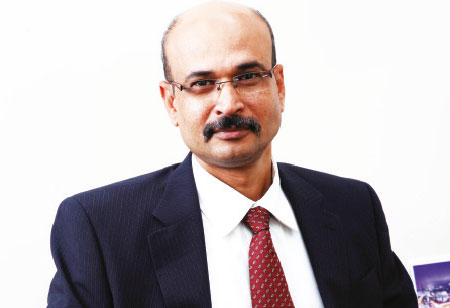The Changing Face of the Indian Skyline Powered by Generators
By Sanjay Jadhav, President of Sterling, Wilson Powergen

Sanjay Jadhav, President of Sterling, Wilson Powergen
The Indian Skyline has undergone a major transformation with property developers reaching for the skies. Powering their projects in the most efficient and silent manner the Indian generator industry has come to play an important role in supplying much needed power backup to these dream projects.
How Generators have helped in changing the Housing Real Estate Scenario in India
The skyline of India has changed dramatically in the past few years. With a shortage of space in metropolitan cities many real estate developers started reaching for the skies that led to seven plus story buildings or complexes becoming a common norm. Skyscrapers and lifestyle apartments have become an achievable object from an aspirational dream. In this rapidly changing scenario diesel generators have come to play an important role of providing these luxurious high-rises, lifestyle apartments, and cluster complexes with much needed back-up power surety. India as a country is on a fast track to growth; however, its power concerns are still real. This is where diesel generators bring in on demand electricity to power India’s rising dreams and aspirations. This is especially true in the case of the housing real estate sector where one needs to ensure there is power at all times so that people can reach their homes comfortably and safely. Could you imagine a situation where the electricity of a twenty one story building goes down! How would the residents reach home or get out of their homes post the fourth floor? Thanks to modern and environmental friendly diesel generators housing real estate developers can construct buildings and complexes that touch the sky without bothering about board line power failures.
The Key Factors that have led Real Estate Developers to rely on Generators
The dependency of developers on generators is twofold, namely; Necessity oriented, and Luxury oriented.
Necessity Oriented Dependency on Generators: In places that experience frequent power outages, most seven story plus buildings and complexes will house a generator as a necessity to make entry and exit for occupants smooth and convenient. Another example of necessity oriented dependency on generators would stem from the fact that in places with extreme weather conditions it is imperative to have ones air conditioner or heater functional at all times. In such cases generators act as on demand power suppliers to keep ones home cool or warm depending on the location. The current power situation in Karnataka wherein there has been major power cuts for a prolonged period of time have also led housing real estate developers to provide consumers with at least 50 percent power back up to their daily requirements.
Luxury Oriented Dependency on Generators: Certain residential projects are luxurious in nature. These opulent homes demand electricity twenty four by seven into three sixty five days! Here the question of power outages or extreme weather does not come into the picture. The Diesel generator is placed as a back up to overcome a worst case scenario of power outage. These luxurious projects rely on generators to keep every occupancy powered irrespective of the situation.
Minimum Generator Capacity required for powering Housing Projects
The typical capacity of diesel generators required for powering housing projects would depend on various factors like number of housing units to be powered, existing power situation, etc. However, a luxury residential project would require multiple units of diesel generators ranging from 750 KVA to 1500 KVA depending on the number of buildings and floors. In smaller three to four storey buildings the minimum requirement would be that of a 100 KVA diesel generator.
• Eco friendly Measurements taken by Generator Producers
All generator manufacturers have to comply with the CPCB II Emission Rule. The new CPCB II Emission Rule is a breakthrough legislation which will certainly help control release of polluting gases into the atmosphere and result in overall healthy living. With implementation of CPCB II and stringent emission norms, there will be substantial improvement in the quality of exhaust gases being discharged into the atmosphere. The genset industry is progressively moving towards providing customers with cleaner and greener energy solutions.




